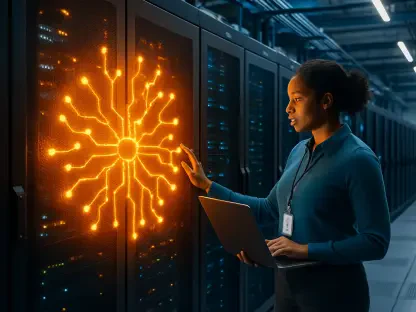What if robots could navigate rugged and unpredictable landscapes with the grace and adaptability akin to the wildest of animals? This question propels the latest innovations in robotics, merging cutting-edge artificial intelligence with the fluidity of nature. As robotics technology races forward, the promise of machines moving instinctively opens a new world of possibilities. Recent breakthroughs have caught the eye, suggesting that robots might soon match the nuanced movement of four-legged creatures, navigating surfaces previously deemed inaccessible.
Unleashing the Power of Mobility Innovation
Roboticists and AI researchers have long grappled with the challenge of designing machines capable of autonomously adapting their movements across diverse terrains. The importance of this capability extends beyond technological curiosity; it offers practical solutions for pressing real-world problems. From disaster response, where swift and adaptable machines could save lives, to space exploration that demands traversing alien landscapes, the ability to autonomously adjust movement strategies is crucial. The advancement of robot mobility holds the potential to significantly enhance operations in environments too hazardous or remote for human intervention.
Transformative Steps in Robot Movement
Central to recent breakthroughs is a novel AI framework enabling robots to transition effortlessly between various gaits like trotting, running, and bounding. This was exemplified by “Clarence,” a robot trained using deep reinforcement learning—a rapid, trial-and-error approach drawn from behaviorist principles. Clarence mastered several gaits in a matter of hours, rapidly assessing and adjusting to unfamiliar terrains, illustrating a shift from theoretical development to real-world application. This capability allowed the robot to thrive across challenging terrains like woodchips and dense vegetation, showcasing remarkable capabilities in terrains where conventional robots falter.
Trailblazing Research from Academic Experts
Groundbreaking findings from the University of Leeds and University College London, published in Nature Machine Intelligence, offer key insights into the future of robotics. Researchers have highlighted the potential for embodied AI systems that emulate animal-like adaptability. Expert voices within these studies suggest a significant shift is occurring in how robots can interact with the world, moving away from reliance on external sensors and drawing inspiration from biological systems. Anecdotal accounts from engineers underscore unexpected triumphs and challenges encountered during testing, emphasizing the real-world adaptability of these robotic systems.
Embracing Real-World Applications
The innovative AI framework has been strategically crafted to integrate seamlessly into various legged robots, regardless of their size or structure. Such adaptable motility has promising applications across multiple industries, including infrastructure inspection, agriculture, and biomechanics research. Employing such advanced AI-driven adaptability allows engineers and researchers to push the envelope further, turning conceptual insights into tangible innovation. This evolution in robotic adaptability heralds a new era of exploration and efficiency in navigating complex terrains.
Paving the Way for Robotic Advancement
This milestone in AI and robotics has set the stage for an exciting future, revealing a realm where robots could intuitively adapt to diverse environments with unprecedented agility. As the blend of AI frameworks and biomimicry evolves, robots promise to transcend natural limitations, navigating terrains with an adaptability and fluidity once reserved for the animal kingdom. This evolution offers tangible steps to advance robotics, creating machines that not only mimic but potentially surpass the locomotion agility of their natural counterparts. This is the dawn of robots poised to revolutionize their roles in challenging settings, continuing to evolve with the world’s shifting demands and daring challenges.









